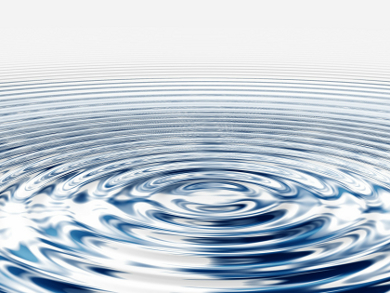Understanding Aqueous Interfaces
Many important reactions occur at the interface between a charged substrate and water with solved ions. Not only do many technical applications rely on such interfaces, in biological systems they also play a key role, for example for protein folding. However, in such surroundings there is still not sufficient direct experimental data available on the crucial reactions, because many otherwise useful techniques are not able to provide a good picture of such interfaces. The main difficulties stem from interactions between the interface and the underlying bulk water layer, also called diffuse layer, which are hard to separate.
A new method might shed more light on the chemical reactions at these interfaces. Chuanshan Tian, Fudan University, Shanghai, China, and colleagues found a way to isolate the spectroscopic signal of the diffuse layer and the interfacial region, also called “interface layer”. The researchers developed a sum-frequency spectroscopy scheme, in which they illuminated a probe with a titan-sapphire laser, operating at 1 kilohertz with 100 femtosecond pulses, and analyzed the spectra with phase-sensitive sum-frequency vibrational spectroscopy.
Separating Interface Layers from Bulk Water
First, the researchers prepared a single-molecular layer of lignoceric acid (C23H47COOH) on water. Then, after laser illumination, the scientists obtained the molecular vibrational signals. These were still mixed signals, including data from both the interface and the diffuse layer. The main difficulty to overcome was to separate these signals. The scientists managed to do this by characterizing the second-order electric-quadrupole bulk nonlinear susceptibility and the third-order bulk nonlinear susceptibility of water, independent of interfaces. This allowed them not only to determine the strength of molecular bonds in the interface layer, but also the geometry of the particles involved. They also found out in which way these properties depend on the acidity and the concentration of ions in the environment.
The scientists are planning to apply their technique to a number of different interfaces. On one hand, it might be useful for the analysis of new energy conversion and storage devices, like photo-catalysis for water-splitting in fuel cells. On the other hand, phenomena at many biological interfaces are still not well understood at the molecular level.
- Unveiling Microscopic Structures of Charged Water Interfaces by Surface-Specific Vibrational Spectroscopy,
Yu-Chieh Wen, Shuai Zha, Xing Liu, Shanshan Yang, Pan Guo, Guosheng Shi, Haiping Fang, Y. Ron Shen, Chuanshan Tian,
Phys. Rev. Lett. 2016.
DOI: 10.1103/PhysRevLett.116.016101



